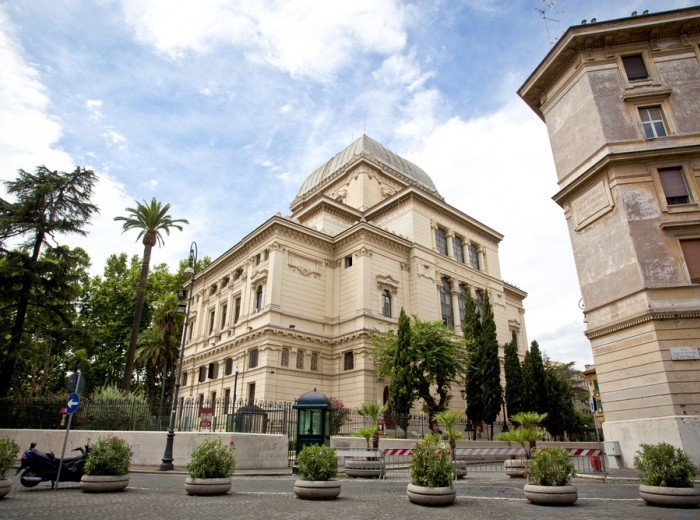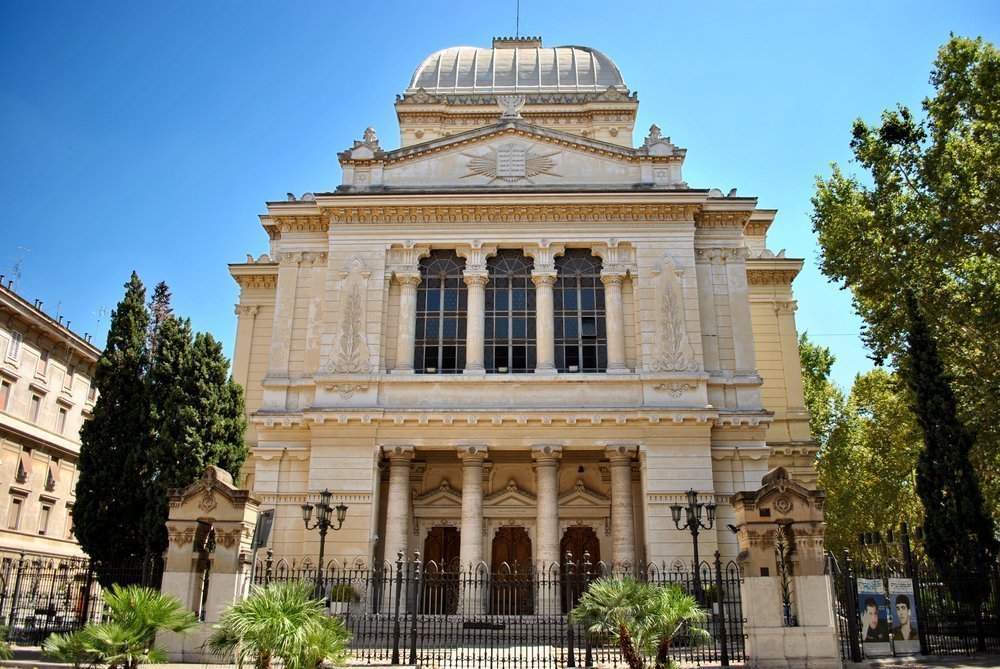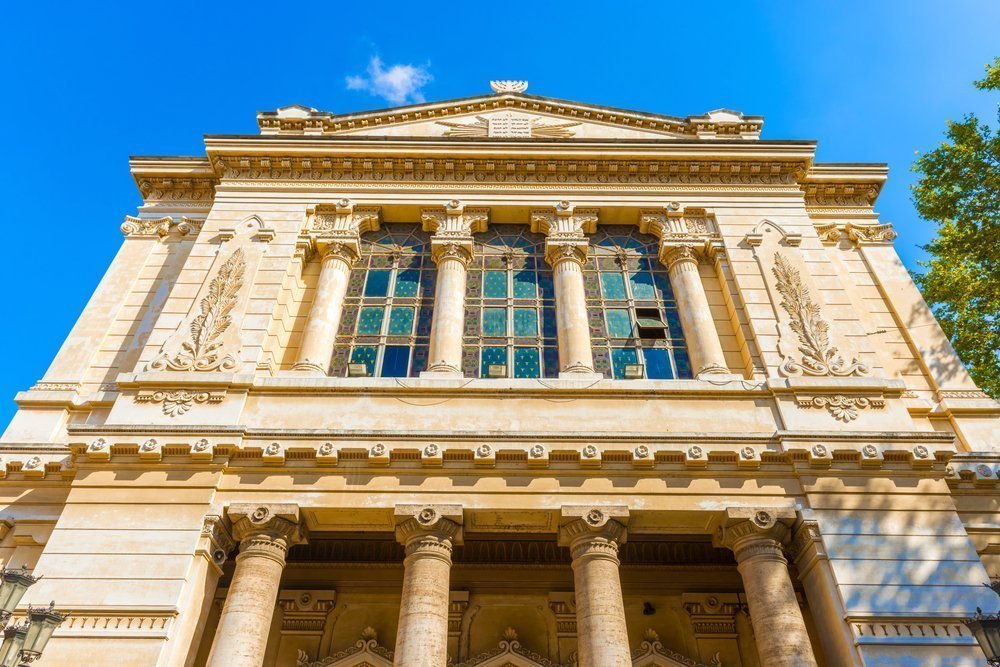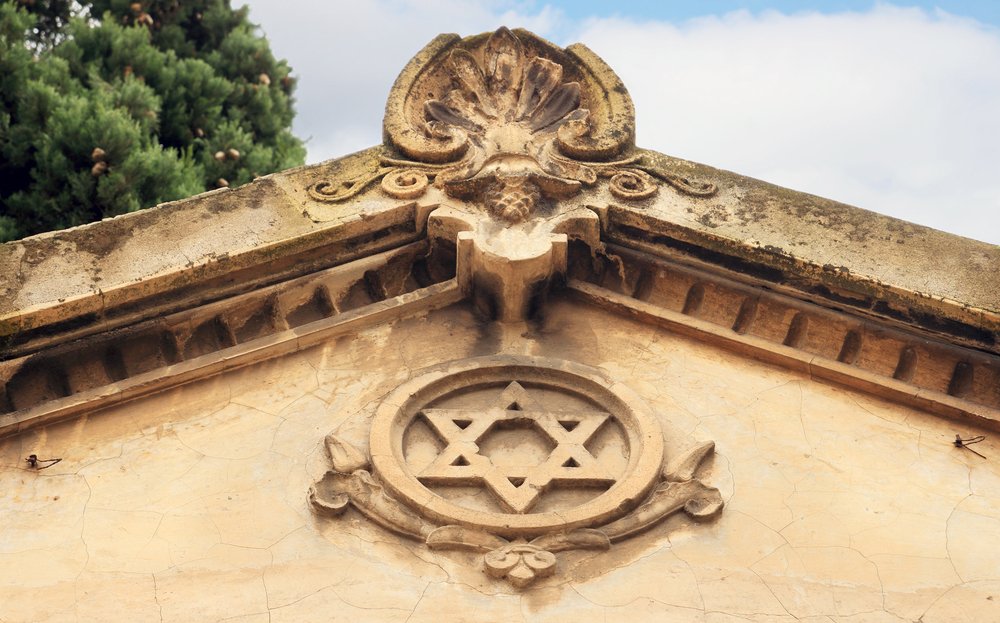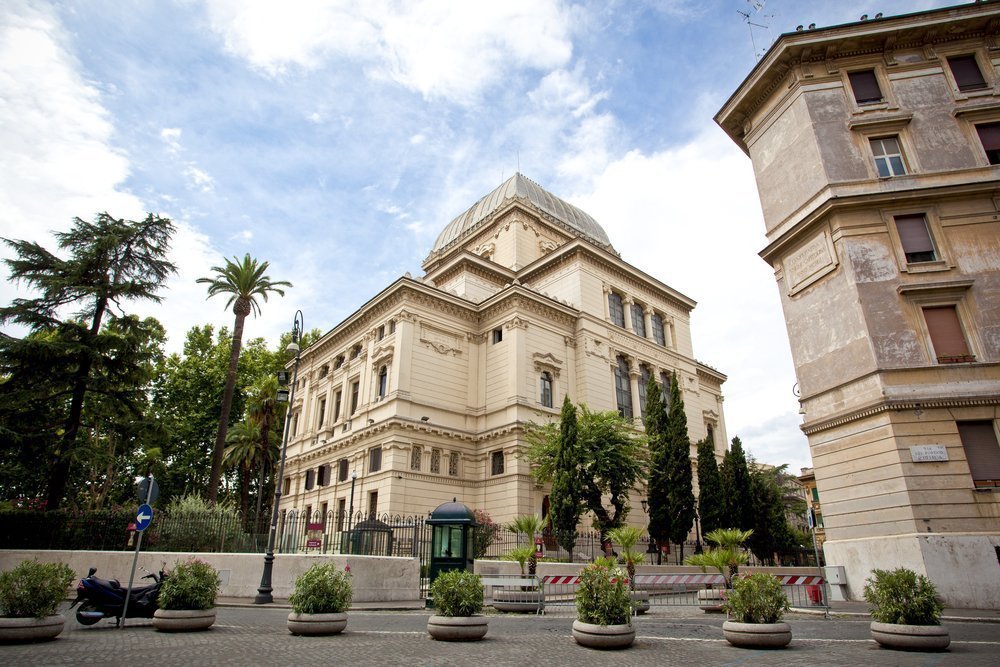The Synagogue of Rome is located on the Lungotevere de ‘Cenci, but his real name is Major Temple and proves to be one of the largest synagogues in Europe. This beautiful religious building is located in Rome since 1870 when King Vittorio Emanuele decided to give citizenship to the Jews of Italy and built a district dedicated to them: the Ghetto.
History of its construction
After the grant by the King Vittorio to build it, the synagogue was built by order of the Jews in 1901, the order was to erect one of the most important symbols of the city of Rome: the Capitol and the Janiculum and its size had to be very large to be visible to all.
Architecture
The synagogue of Rome has an elliptical shape and is characterized by shooting lines from the Assyrian-Babylonian style, while the dome has inside some beautiful oriental decorations. They were chosen the symbol of art nouveau artists for decorations, while the items of furniture were taken from old synagogues; Cesare Picchiarini took care to create the stained glass windows, while the paintings in Bruschi and Brugnoli.
The interior of the Synagogue
The synagogue, on the inside, is divided into two one-storey underground that houses the Jewish Museum which contains many elements of the Jewish tradition, but also a small synagogue called Temple Spanish. The main synagogue is on the ground floor and features a large central space and two aisles, the main element of this is the construction of Jewish-Aron Ha-Kodesh. On the three raised sides of the temple are the women’s galleries, ie those spaces dedicated to women.
The organ
The Rieger brothers, in 1904, were challenged to build a pipe organ with two keyboards and a pedal, the organ located behind the Aron-ha-Kodesh, one of the points characterizing a synagogue. This religious building is a landmark for the entire Jewish culture of the city and beyond.

